Introduction
Origami Squirrel, the ancient Japanese art of paper folding, offers wonderful opportunities to celebrate the charming creatures of our woodlands, and few animals are as beloved and recognizable as the industrious squirrel. This origami squirrel tutorial transforms a simple square sheet of paper into a delightful representation of these energetic forest dwellers, complete with their characteristic bushy tail, alert posture, and compact body that makes them instantly identifiable. What makes this origami squirrel particularly engaging is its combination of recognizable woodland charm and achievable folding techniques—the distinctive silhouette, prominent tail, and characteristic stance make it clearly identifiable while requiring intermediate-level skills that dedicated beginners can master with practice. Unlike more complex animal models, this squirrel design captures the essence of these acrobatic creatures through strategic use of step folds, reverse folds, and dimensional shaping that highlights their most distinctive features. The completed model showcases the squirrel’s iconic elements including the alert head position, compact body, and the magnificent bushy tail that makes these animals unmistakable in parks, gardens, and forests worldwide. Whether you’re passionate about wildlife, teaching children about forest ecosystems, creating autumn decorations, or expanding your origami animal collection, this squirrel tutorial offers both technical challenge and the satisfaction of crafting a beautiful representation of one of nature’s most entertaining and resourceful creatures.
Step-by-Step Instructions
Step 1: Create the Foundation Grid For Origami Squirrel
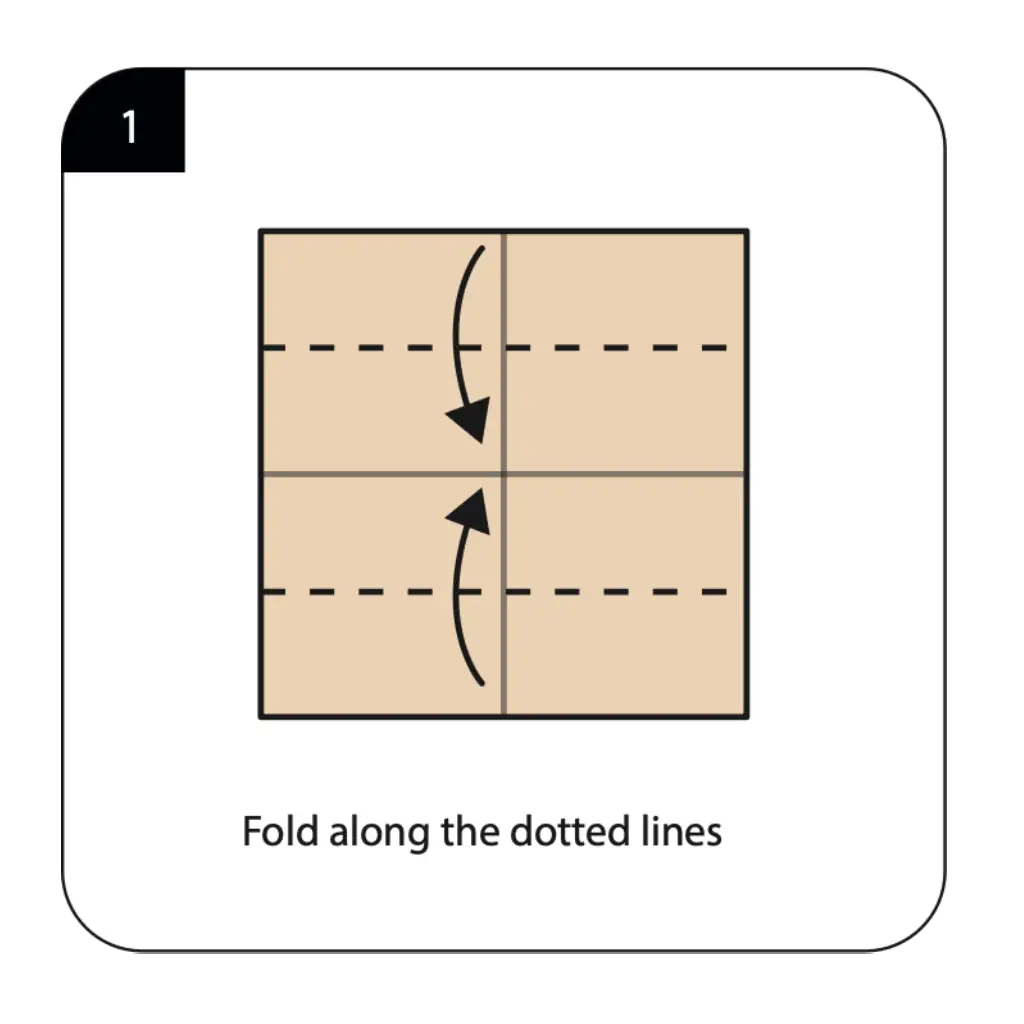
Begin with a square sheet of paper, preferably orange or brown to represent the squirrel’s natural coloring. Fold along the dotted lines as shown in the diagram to establish the basic reference grid needed for this woodland animal model. These initial folds create the fundamental framework that will guide all subsequent shaping and ensure proper proportions in your finished origami squirrel. The precision of these foundation creases is crucial for achieving the balanced, natural appearance characteristic of squirrels and their distinctive body structure. Take care to make each fold clean and well-defined, creating the roadmap that will transform your flat square into a three-dimensional forest creature.
Step 2: Establish the Basic Structure For Origami Squirrel

Fold along the dotted lines as indicated in the second diagram, building upon the crease pattern established in Step 1. These strategic folds begin consolidating the square paper into the more complex geometry needed to represent a squirrel’s anatomy. The accuracy of these structural folds directly affects the final proportions and recognizable features of your finished woodland animal. Work methodically to ensure each fold aligns precisely with the established grid pattern, creating the foundation that will support the squirrel’s characteristic body shape and distinctive tail structure.
Step 3: Create the Multi-Directional Base For Origami Squirrel
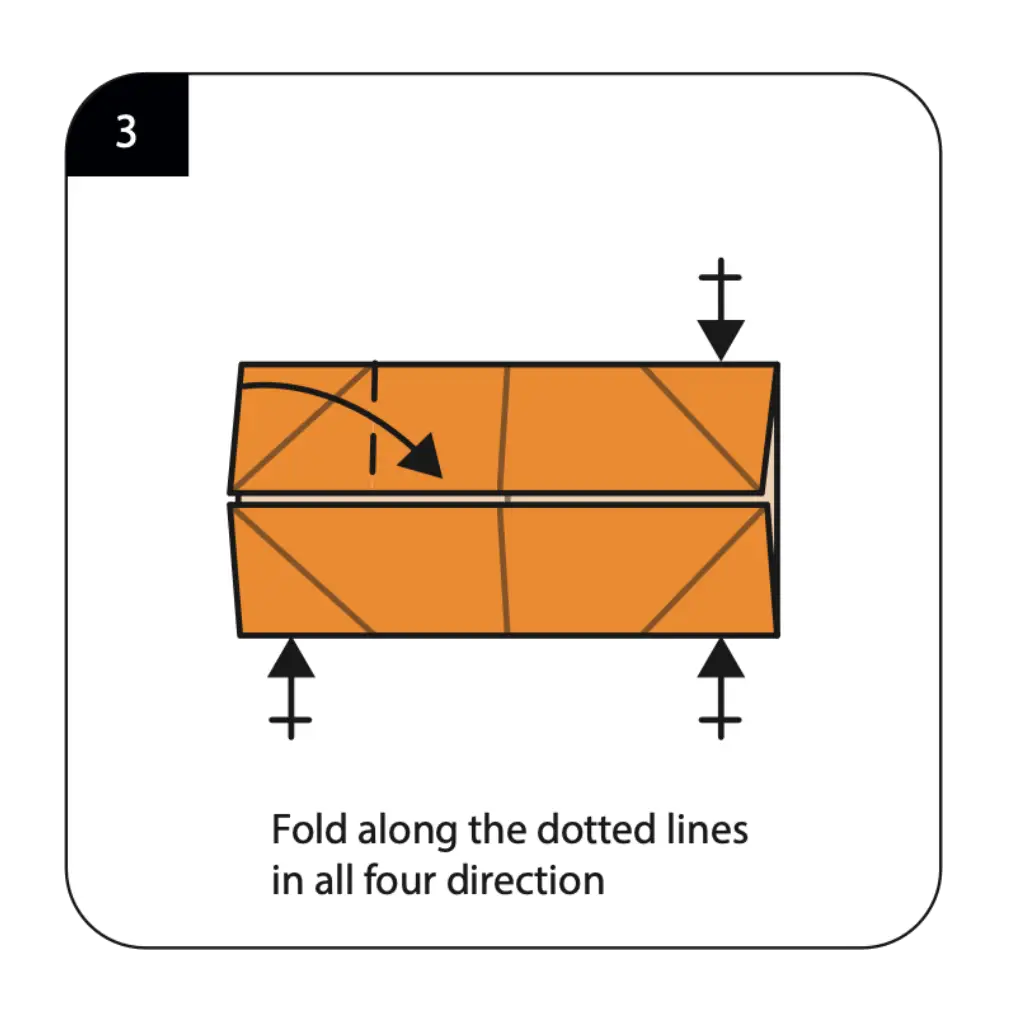
Fold along the dotted lines in all four directions as shown, establishing the comprehensive crease pattern needed for this intermediate-level squirrel model. These multi-directional folds create the complex geometry required to represent the squirrel’s distinctive body proportions and three-dimensional form. The systematic execution of these directional folds ensures that your paper will have the structural flexibility needed for the advanced shaping techniques to come. This step demonstrates how thorough preparation with foundational creases enables the creation of sophisticated animal forms through strategic paper manipulation.
Step 4: Shape the Body Foundation For Origami Squirrel
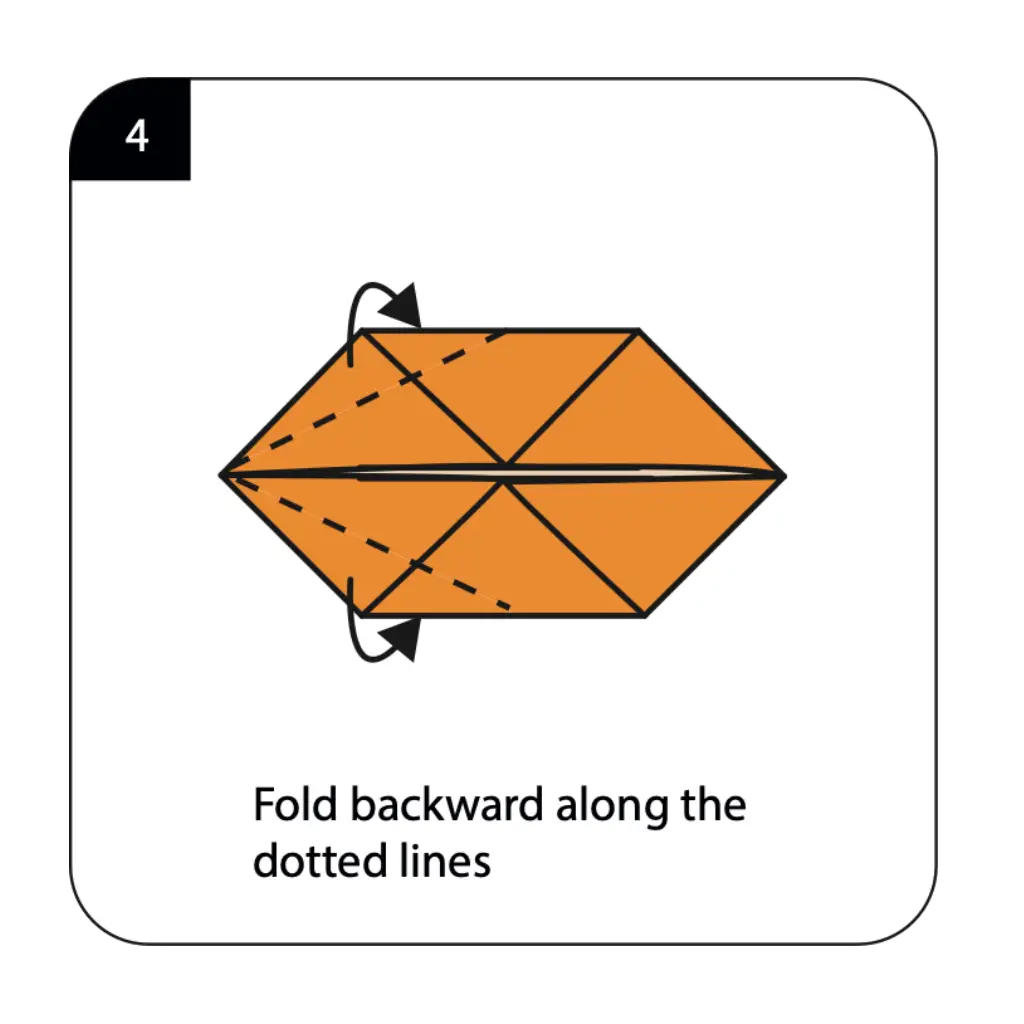
Fold backward along the dotted lines as indicated, beginning to create the dimensional quality that will distinguish your origami squirrel from simpler flat designs. These backward folds add depth and begin establishing the three-dimensional aspects of your woodland creature while maintaining the structural integrity needed for subsequent shaping. The precision of these backward folds affects how well your squirrel will capture the compact, alert posture characteristic of these forest animals. This step begins the transformation from flat geometric pattern to the recognizable form of an active woodland squirrel.
Step 5: Develop the Core Structure For Origami Squirrel
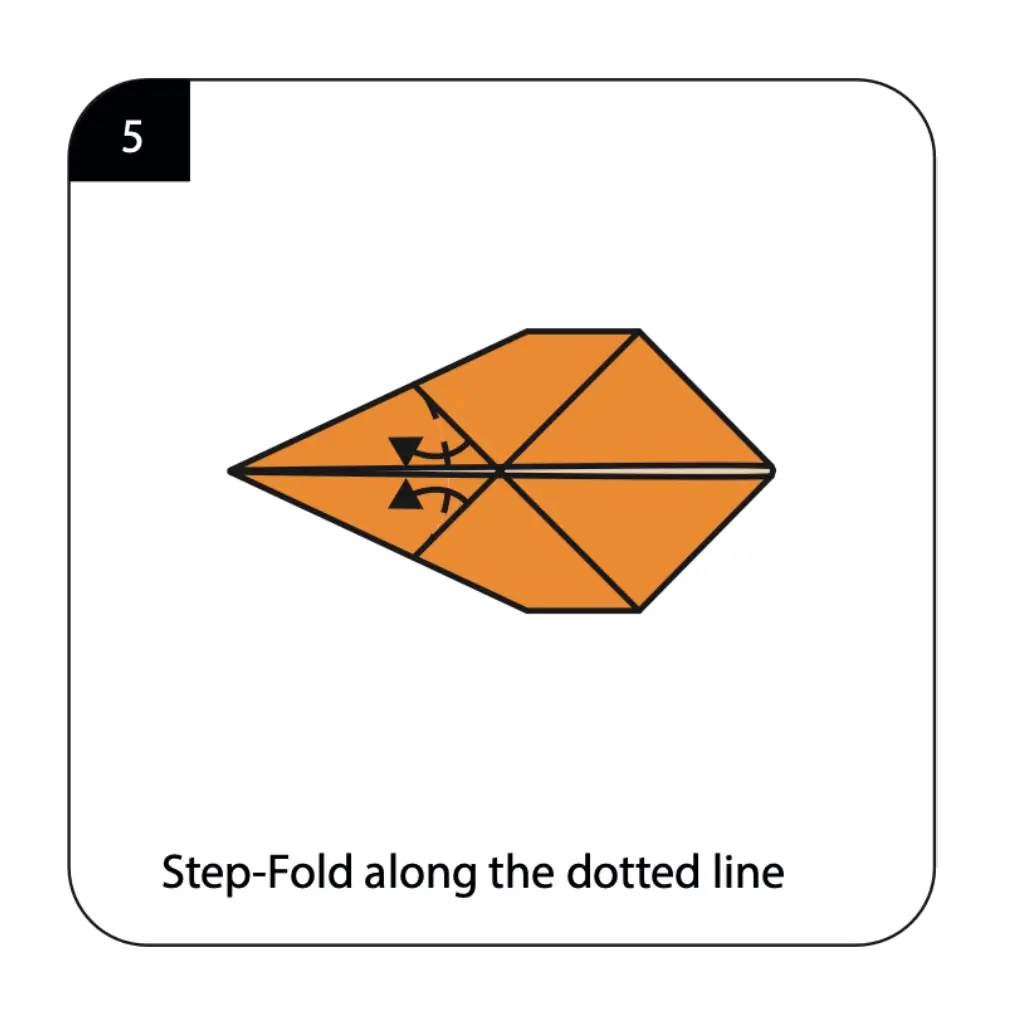
Execute a step-fold along the dotted line as shown, using this advanced technique to create the complex angles needed for your squirrel’s body structure. The step-fold adds important dimensional elements while establishing the proportional relationships between different parts of your woodland animal. This technical fold requires careful manipulation of multiple paper layers simultaneously while maintaining the integrity of your established base structure. The successful execution of this step-fold significantly enhances the three-dimensional quality and realistic appearance of your origami squirrel model.
Step 6: Define the Body Shape
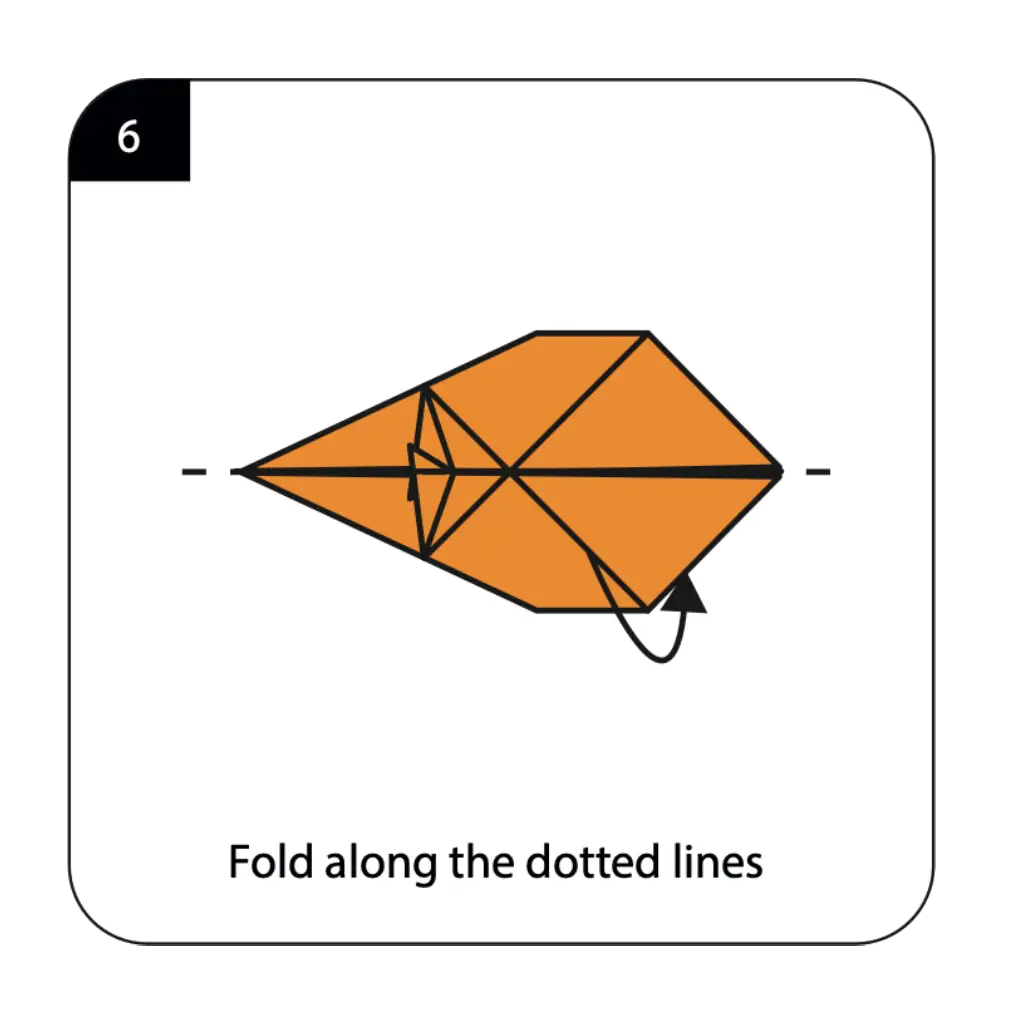
Fold along the dotted lines as indicated to further refine your squirrel’s body structure and establish the characteristic compact form of these woodland creatures. These shaping folds continue developing the distinctive proportions that make squirrels instantly recognizable, particularly their alert, upright posture. The careful execution of these body-defining folds creates the foundation for the squirrel’s most distinctive features, including the prominent tail and alert head position. This step demonstrates how strategic folding can capture not just physical form but also the behavioral characteristics that define different animal species.
Step 7: Create the Dimensional Form
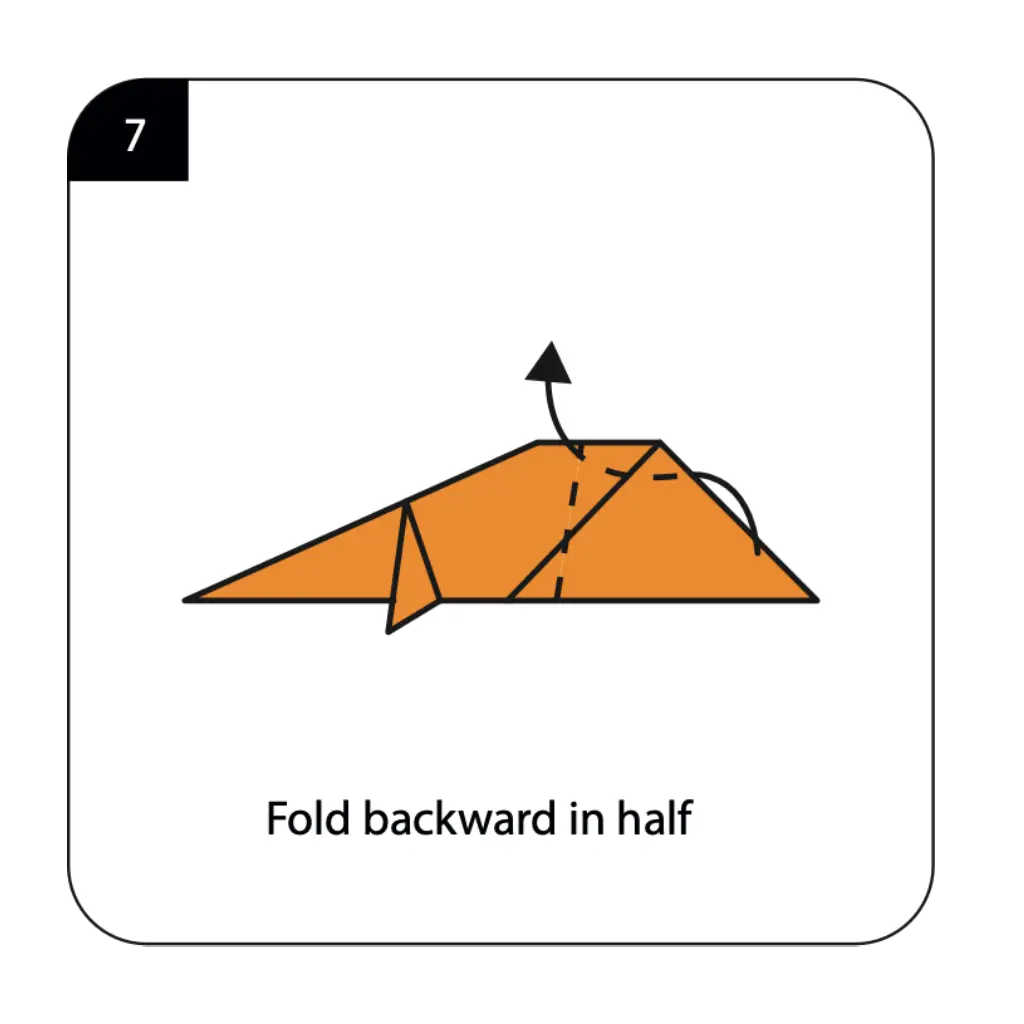
Fold backward in half as shown to establish the three-dimensional structure that will serve as the foundation for your squirrel’s final form. This crucial fold transforms your flat construction into a dimensional model with the depth and volume needed to represent a living creature. The precision of this backward fold affects both the stability and the realistic appearance of your finished origami squirrel. This step completes the basic three-dimensional transformation and prepares your model for the detailed shaping that will create the squirrel’s most recognizable features.
Step 8: Position for Final Shaping
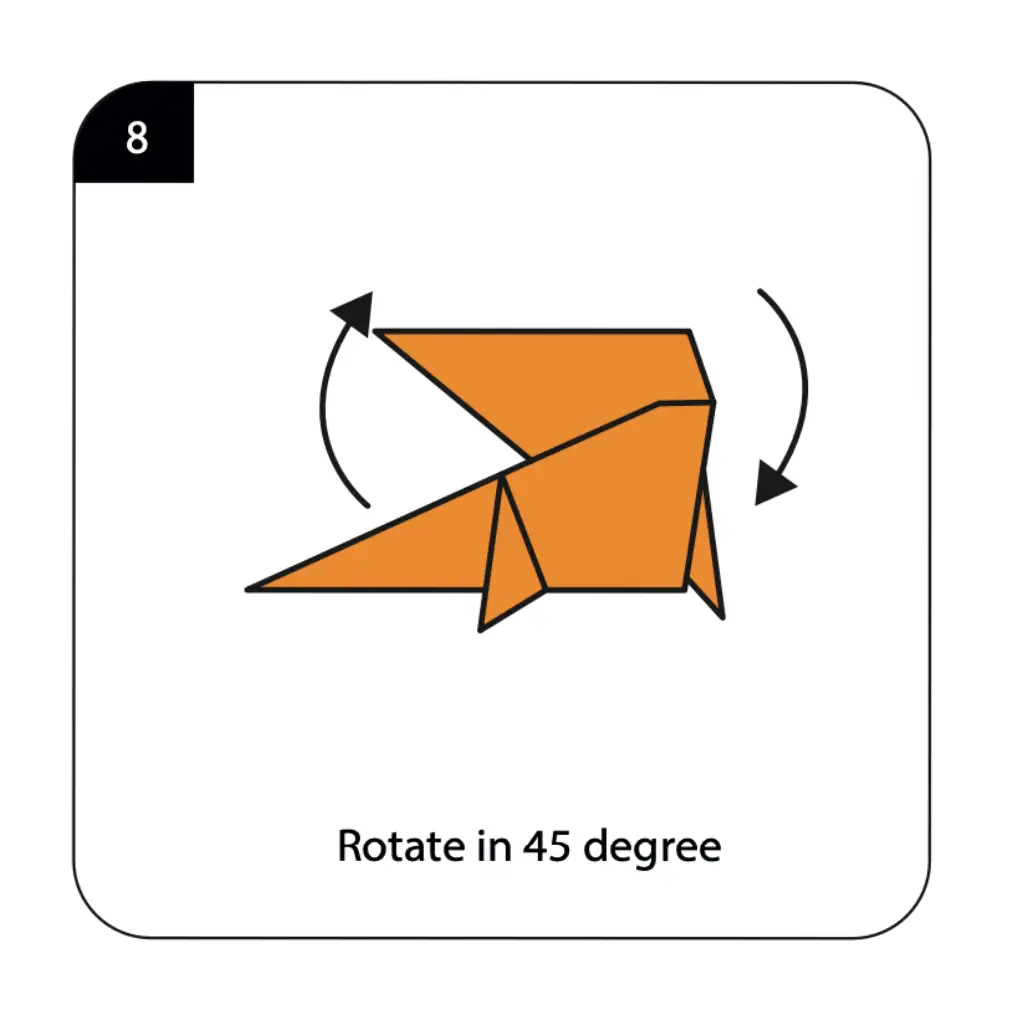
Rotate the model 45 degrees as indicated to prepare for the final series of folds that will complete your squirrel’s distinctive appearance. This reorientation allows optimal access to the areas that will become the head, tail, and other characteristic features of your woodland animal. The proper positioning at this stage is crucial for the successful execution of the remaining advanced techniques. This rotation demonstrates how strategic repositioning can facilitate complex folding sequences while maintaining the structural integrity of your developing squirrel model.
Step 9: Create the Tail Structure
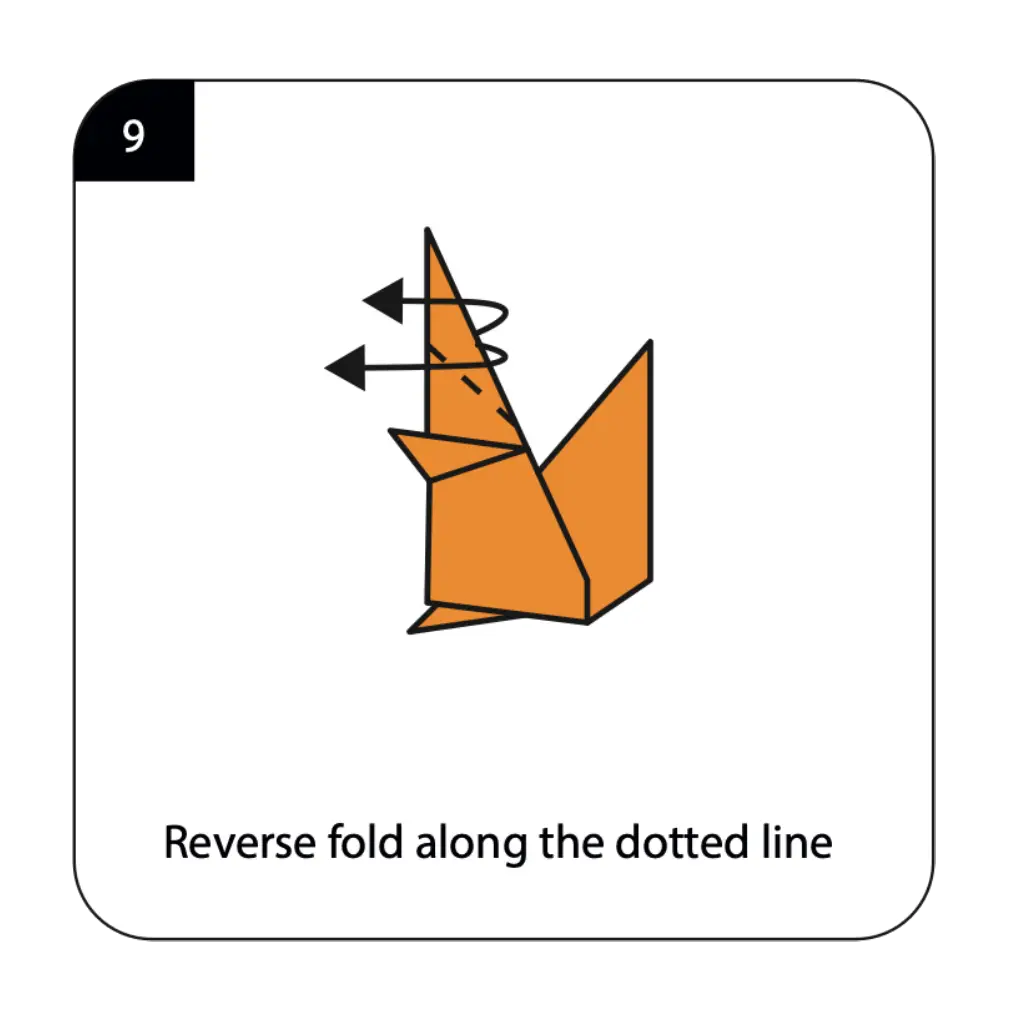
Perform a reverse fold along the dotted line to begin forming the squirrel’s most distinctive feature—its magnificent bushy tail. This advanced technique requires careful manipulation of the paper layers to create the curved, upright tail position characteristic of alert squirrels. The precision of this reverse fold significantly impacts the recognizability of your finished model, as the prominent tail is perhaps the most identifying feature of squirrels. This step transforms your basic animal form into a clearly identifiable squirrel through the creation of its most distinctive anatomical feature.
Step 10: Shape the Head and Neck
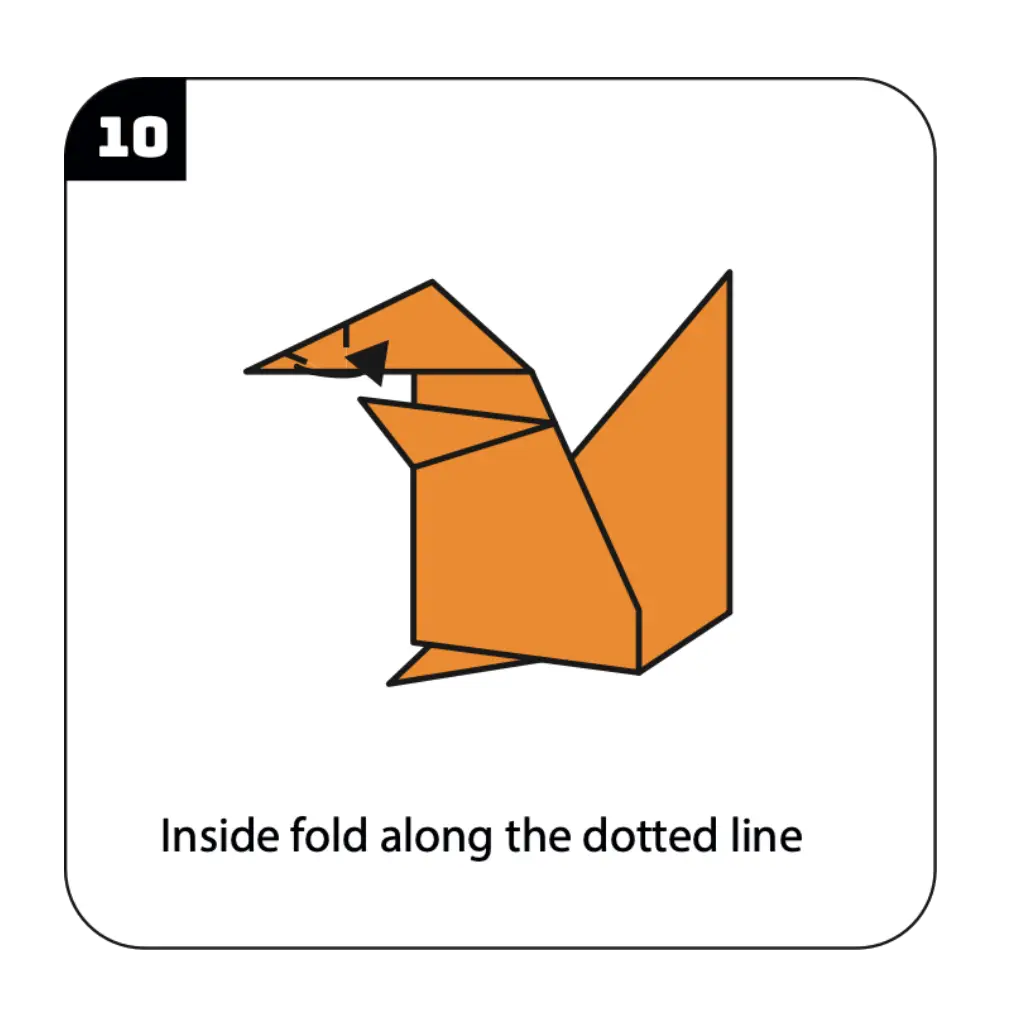
Execute an inside fold along the dotted line to create the squirrel’s head and establish the alert, upright posture characteristic of these vigilant woodland creatures. This detailed fold requires precise manipulation to achieve the proper head-to-body proportions that make squirrels instantly recognizable. The careful execution of this head-shaping fold contributes significantly to the personality and character of your origami squirrel. This step demonstrates how small but precise adjustments can dramatically enhance the lifelike quality and recognizability of origami animal models.
Step 11: Complete Your Origami Squirrel
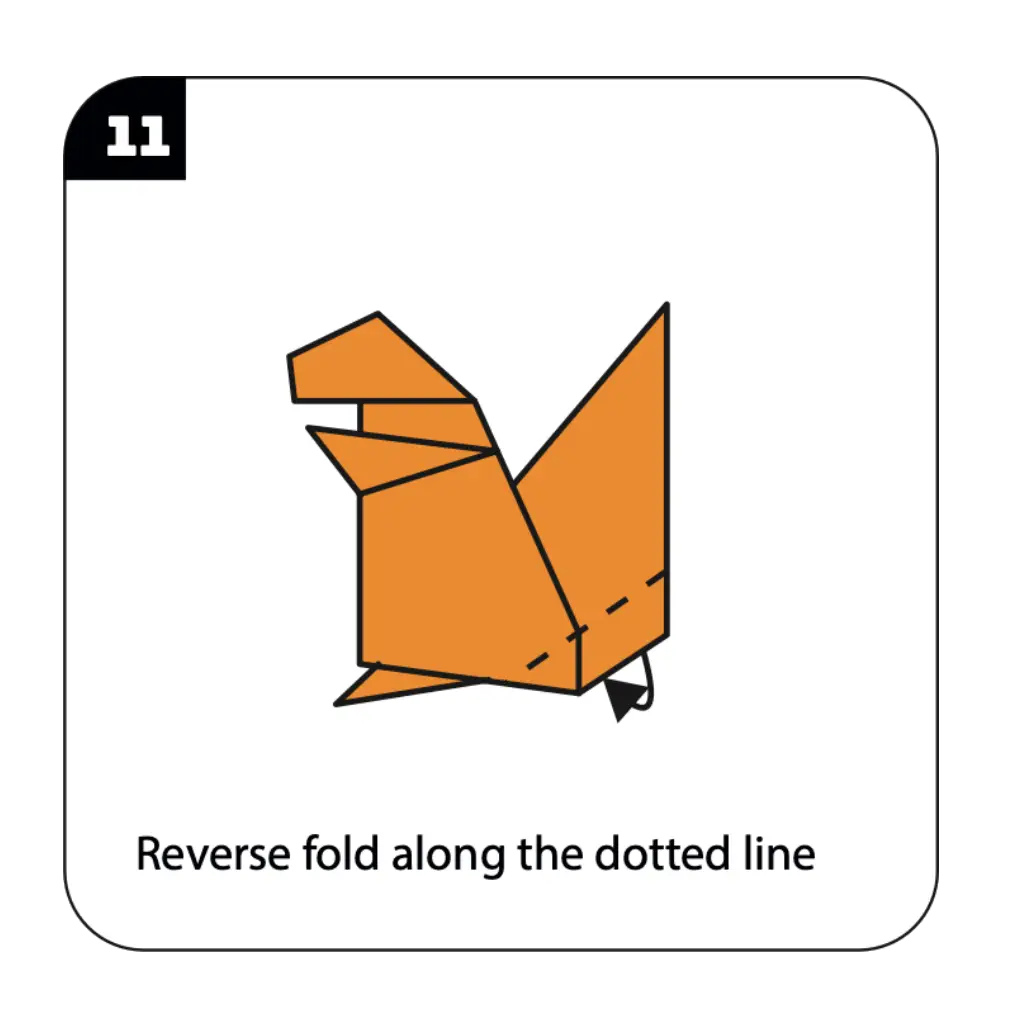
Perform the final reverse fold along the dotted line to add the finishing touches that complete your woodland squirrel’s transformation from paper to recognizable forest creature. This last structural adjustment refines the overall proportions and adds the final details that bring your squirrel to life. Your completed origami squirrel now displays all the characteristic features that make these animals beloved woodland residents—the alert posture, compact body, and magnificent tail. The finished model captures both the physical form and the energetic spirit of real squirrels, ready to scamper into displays about forest wildlife, educational presentations about woodland ecosystems, or simply delight viewers as a charming representation of one of nature’s most entertaining and acrobatic creatures.
Conclusion
Congratulations on creating your origami squirrel! This charming woodland creature demonstrates how intermediate folding techniques can capture the distinctive characteristics and lively personality of one of our most beloved forest animals. From a simple square sheet, you’ve crafted a dimensional representation that embodies both the physical form and the energetic spirit of these acrobatic woodland dwellers. The origami squirrel showcases how thoughtful use of step folds, reverse folds, and dimensional shaping can translate complex animal anatomy into elegant geometric interpretations that remain true to the creature’s essential character. Your completed model serves multiple purposes—as an impressive display of advancing origami skills, an educational tool for learning about forest ecosystems and wildlife behavior, or simply as a delightful accent that brings the wonder of woodland creatures into your home. The techniques you’ve mastered through this project, particularly the integration of multiple advanced folds to create complex three-dimensional forms, represent valuable skills that open doors to even more challenging animal designs. We hope this tutorial has deepened your appreciation for both the technical artistry of origami and the remarkable adaptability that makes squirrels such successful urban and forest residents. Remember that each squirrel you create offers opportunities to explore different poses and tail positions, allowing you to capture various aspects of these creatures’ acrobatic behavior and playful personality through the precision and creativity of paper folding.
- “Before attempting this intermediate squirrel, master essential techniques in our Origami Basics for Beginners guide.”
- “Explore more woodland creatures in our Origami Animals Collection, featuring rabbits, foxes, and other forest dwellers.”
- “Discover more nature-inspired projects in our Creative Origami Gallery for wildlife enthusiasts and advanced folders.”
- “Display your squirrel with other forest creatures using ideas from our Decorative Origami Guide for nature-themed arrangements.”
- “Create a complete woodland scene by adding Origami Flowers to represent the forest habitat where squirrels live.”
- “Build an entire forest ecosystem using techniques from our Modular Origami Projects for comprehensive wildlife displays.”



